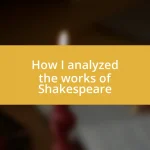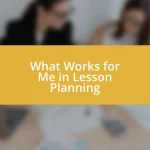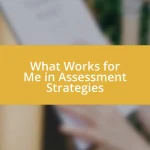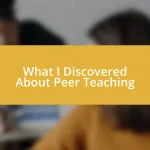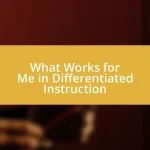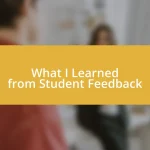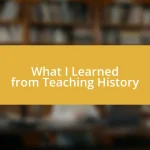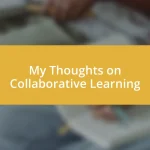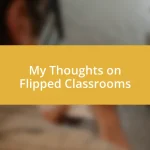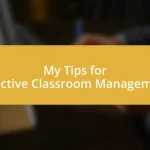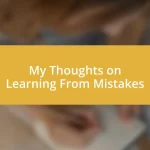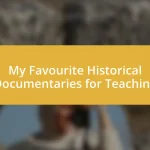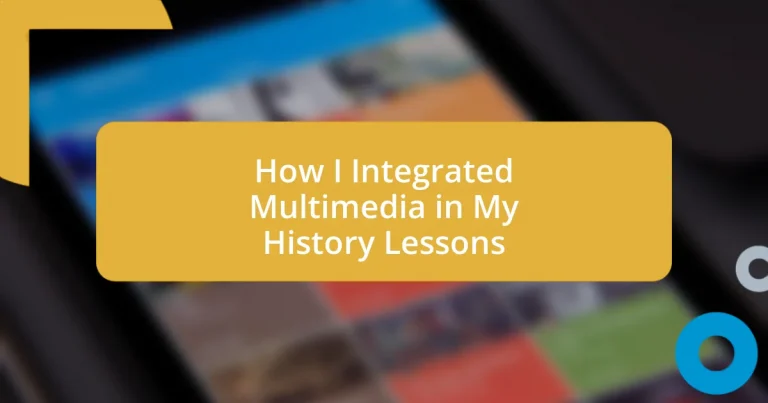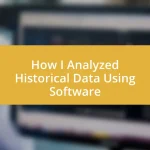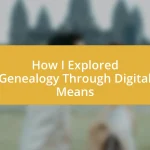Key takeaways:
- Integrating multimedia enhances student engagement and accommodates diverse learning styles, allowing for deeper discussions and understanding of historical events.
- Thoughtful selection and planning of multimedia tools, such as Prezi and interactive timelines, empower students and foster a sense of ownership in their learning.
- Gathering student feedback after lessons is crucial for refining multimedia approaches, leading to continuous improvement and deeper emotional connections with the material.
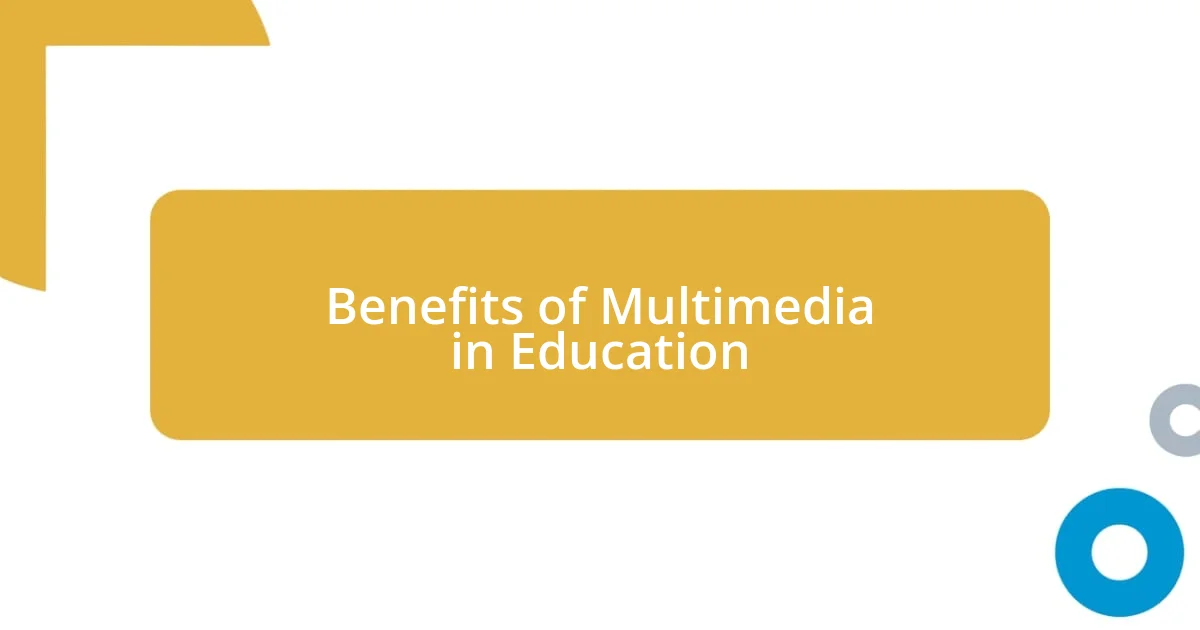
Benefits of Multimedia in Education
When I first started integrating multimedia into my lessons, I noticed an immediate shift in my students’ engagement levels. Imagine the difference between a dry textbook presentation and a vibrant historical documentary! The visuals, sounds, and interactive elements not only piqued their interest but sparked discussions that I had never seen before.
Another fascinating benefit of using multimedia is how it caters to diverse learning styles. I often think about my students who struggle with traditional teaching methods. For instance, one of my quieter students thrived when we used podcasts and videos; it was as if a whole new world opened up for her understanding of historical events. Doesn’t it make sense that when we present information in different formats, we can reach more students where they are?
Moreover, multimedia allows me to bring history to life in ways that simply aren’t possible otherwise. I vividly recall a lesson where we explored ancient civilizations through an augmented reality (AR) app. The kids were not just reading about the pyramids; they were immersed in an experience, walking ‘through’ ancient streets. Isn’t that a game changer for understanding context and emotional impact in history?
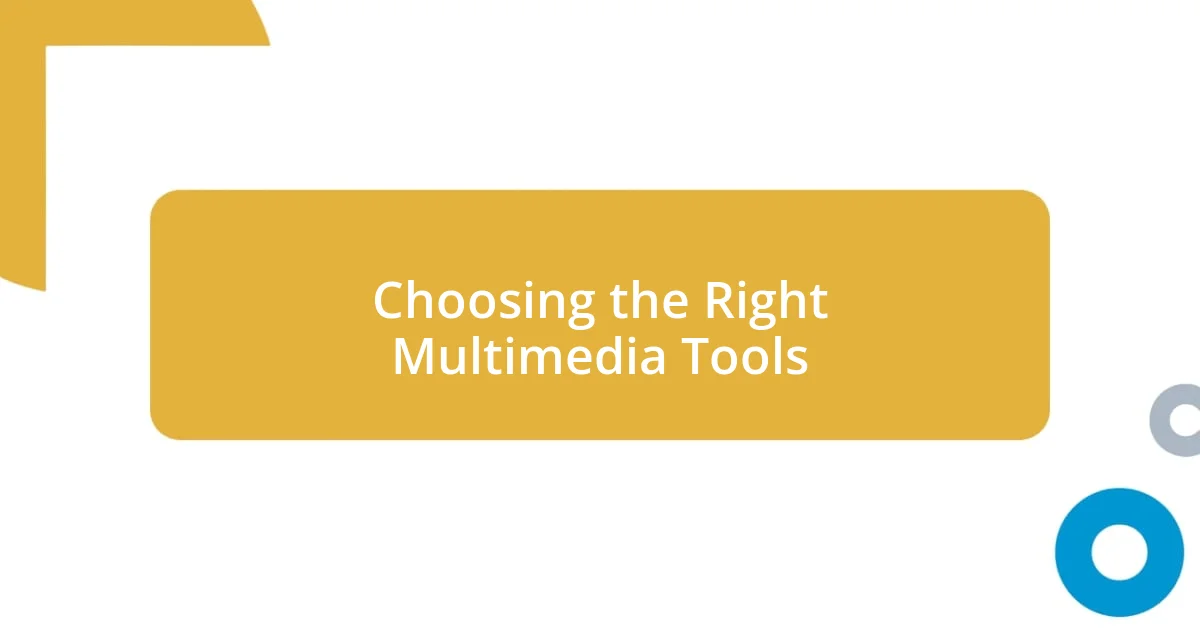
Choosing the Right Multimedia Tools
Choosing the right multimedia tools can feel overwhelming at times, but I’ve learned to prioritize practicality and alignment with learning objectives. In my experience, tools like Prezi and Google Slides allow for a dynamic presentation of historical timelines and events. I still remember the excitement in my classroom when I unveiled a Prezi on the Renaissance. The visual flow captivated my students and made the interconnectedness of that era’s advancements much clearer.
As I explored different options, I realized that simple tools can often be more effective than elaborate ones. For instance, we used interactive timelines on Google Slides for our World War II discussions. Students contributed their own research and linked videos or primary sources; it was an empowering experience. Seeing their own work integrated into the timeline fostered a sense of ownership and investment in their learning.
Moreover, I always consider my students’ comfort levels with specific tools. In one memorable project, we ventured into podcast creation as a way for students to share their insights on historical figures. The joy and pride I witnessed when they published their episodes were truly heartwarming. Choosing tools that connect with my students on an emotional level has consistently yielded the best outcomes in my lessons.
| Tool | Benefits |
|---|---|
| Prezi | Dynamic presentations, visual storytelling |
| Google Slides | Collaboration, easy integration of multimedia |
| Podcasting | Fosters ownership, engages students’ voices |
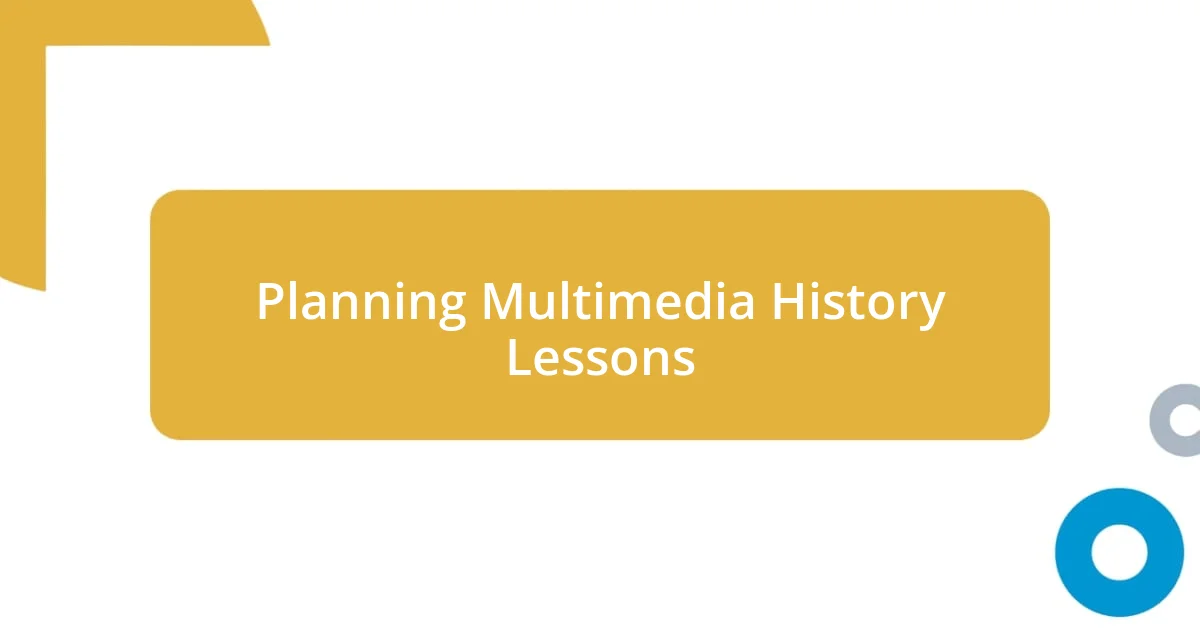
Planning Multimedia History Lessons
When it comes to planning multimedia history lessons, I believe a structured approach makes all the difference. I’ve found that creating a clear outline helps me identify which multimedia elements to incorporate and how they will enhance the lesson. For instance, one year, I designed a unit on the Civil Rights Movement that included videos of key speeches, interactive timelines, and even virtual tours of significant locations. The resonance of showcasing historical events through multimedia not only captivated my students but also deepened their understanding of the moral complexities involved.
Here’s a checklist of steps I’ve developed to streamline my planning process:
- Define Learning Objectives: What do I want my students to learn or take away from each lesson?
- Select Appropriate Multimedia Tools: Which tools align best with my objectives and my students’ learning styles?
- Create Interactive Elements: How can I involve students actively during the lesson?
- Gather Resources: What videos, articles, and interactive activities do I need to prepare?
- Plan for Assessment: How will I evaluate their understanding of the material presented via multimedia?
My experience illustrates that thoughtful planning around multimedia not only enhances engagement but also transforms the way students relate to history. It’s about crafting experiences that linger long after the lesson has ended. For example, I remember when a student remarked weeks later about how a documentary we watched changed her view of the Vietnam War. Moments like that remind me of the lasting impact we can create through careful multimedia integration.
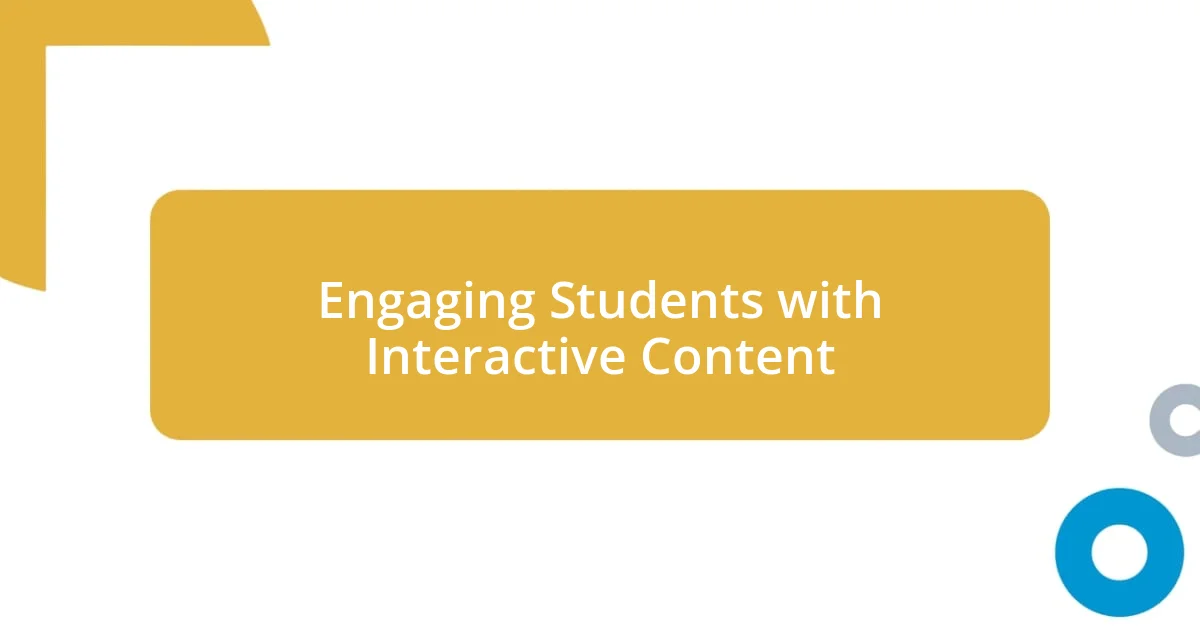
Engaging Students with Interactive Content
In my experience, interactive content truly brings history to life for students. One time, I used a live polling tool during a lesson on the American Revolution. As students cast their votes on pivotal decisions made by leaders at the time, their eyes sparked with curiosity. The immediate feedback allowed us to dive deeper into discussions and encouraged hesitant students to share their thoughts freely. Doesn’t it feel rewarding when students become actively involved instead of passively sitting back?
Using gamification in lessons has been another game changer. I recall a memorable session where we played a Jeopardy-style quiz game focused on various historical events. The laughter and friendly competition eliminated any barriers, turning a standard review into an exciting experience. Watching students high-five each other over correct answers was a joy — their excitement made it clear that history could be fun and engaging. Why wouldn’t we want to recreate those moments?
Graphic organizers online have also been an effective way to visually engage students with complex concepts. I once introduced an interactive mind map for exploring the causes of the Civil War. The students eagerly added their connections and insights, transforming the project into a collaborative endeavor. Seeing the collective understanding unfold before their eyes not only reinforced their knowledge but also fostered a sense of community in the classroom. How often do we get to witness that level of teamwork in learning?
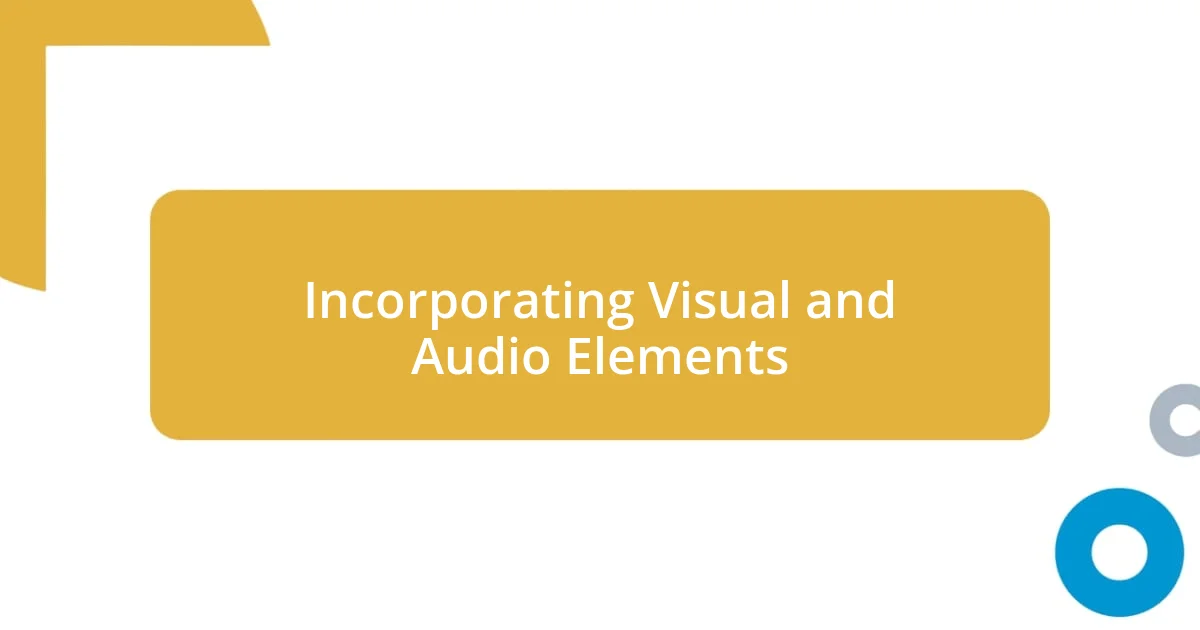
Incorporating Visual and Audio Elements
In my classroom, visual and audio elements truly elevate the learning experience. I once introduced a documentary clip during a lesson on World War II, and the atmosphere shifted dramatically. The students, previously quiet, became vibrant contributors to the discussion, sharing thoughts and emotions sparked by what they had just seen. Isn’t it incredible how a powerful image or a stirring speech can ignite passion and curiosity in learners?
I’ve also found that incorporating music related to historical events adds a layer of emotional depth. During a unit on the Civil Rights Movement, I played songs from that era, allowing students to hear the sentiments reflected in the music. One student shared how listening to these songs made her feel a connection to the past, something textual resources often lack. Have you considered how music can create bonds between generations, enriching the historical narrative?
Using infographics has been another game-changing strategy for enhancing visual learning. I vividly remember creating a timeline infographic for the Cold War that visually captured each pivotal moment. As the students explored it, they expressed excitement and curiosity, diving into discussions that I hadn’t even anticipated. It was one of those moments that made me realize — how often can a visual element stir profound discussions and multiple interpretations? That’s the magic of multimedia in history lessons!
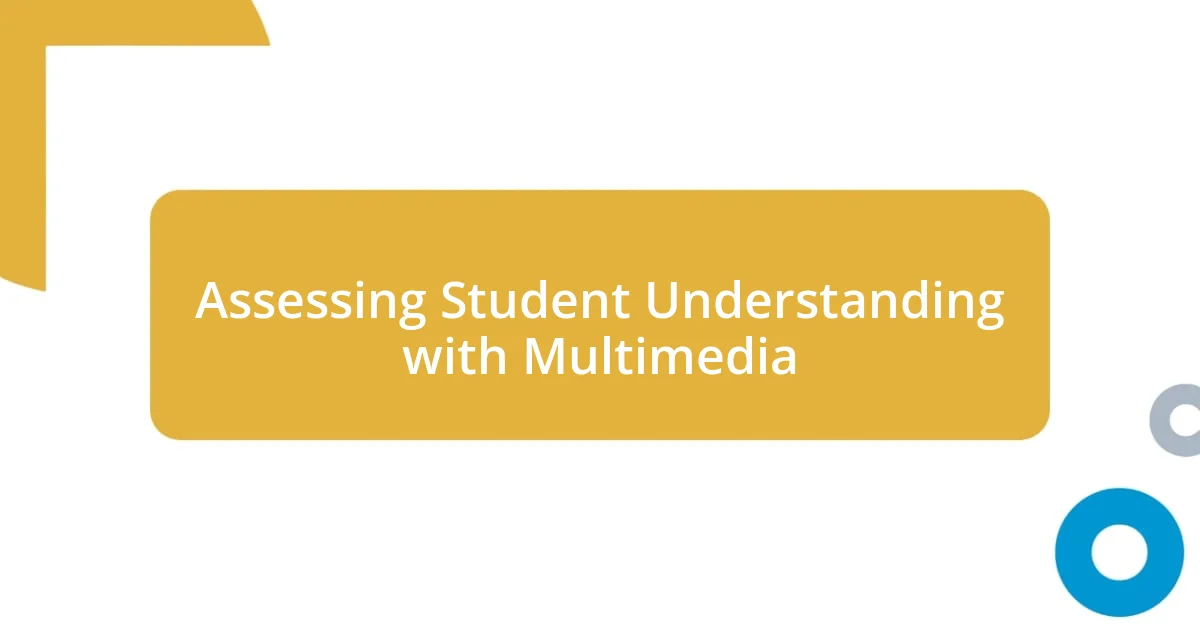
Assessing Student Understanding with Multimedia
Assessing student understanding with multimedia has been a revelation for me. I vividly recall a project where students created video presentations on historical figures. Watching them blend creativity with facts was fascinating; they weren’t just reciting information, but using visuals and storytelling to convey their understanding. Isn’t it fascinating how a well-crafted video can reveal a student’s depth of knowledge in ways a standard test never could?
One particularly memorable assessment involved having students produce digital storytelling projects about significant events. Each student chose their angle and format, and I marveled at the unique perspectives they presented. As they passionately shared their stories, it was evident that they hadn’t just understood the events—they had developed a personal connection to them. Can you think of a more powerful way to demonstrate comprehension than through heartfelt narratives that bring history alive?
This approach has transformed my assessment methods. For instance, during a lesson on the Industrial Revolution, I integrated a virtual reality experience that allowed students to “walk through” a factory from that era. The exit surveys revealed not just improved retention of facts, but a genuine enthusiasm for the subject matter! How often do assessments yield such passion paired with analytical insights? It’s not just about what students know; it’s about how deeply they engage with the past through multimedia.
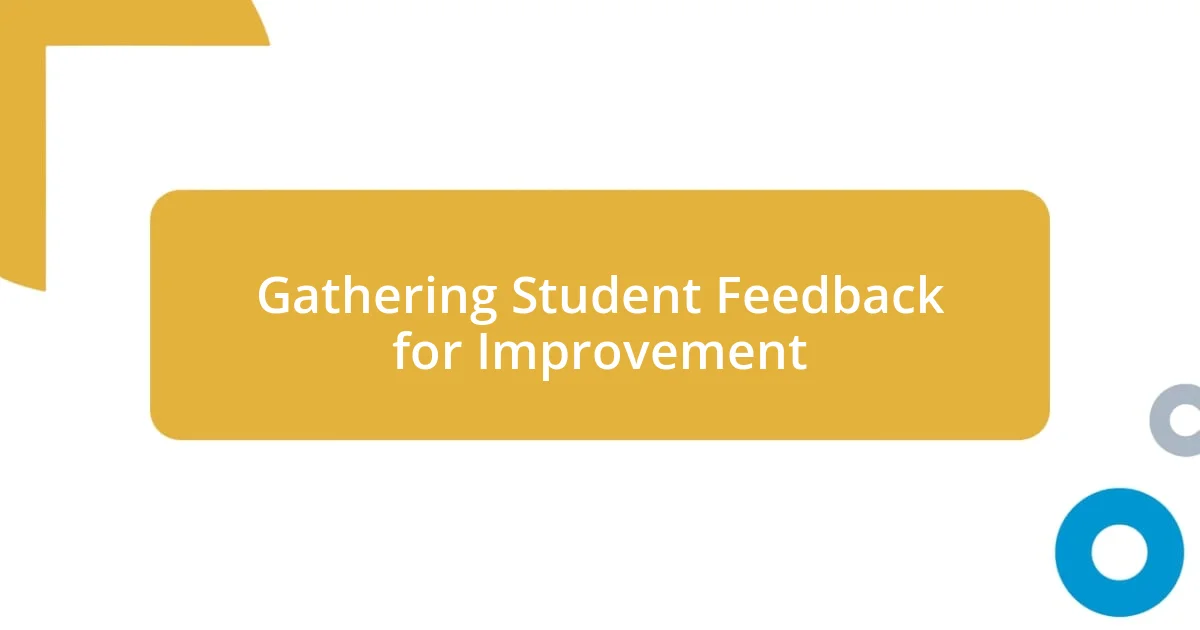
Gathering Student Feedback for Improvement
Gathering student feedback has been essential in refining my multimedia approach. After each lesson, I ask my students to fill out a simple survey about what they enjoyed and what they felt could be improved. Interestingly, I’ve discovered that even the most engaging activities can be enhanced when students share their honest thoughts. They often pinpoint small elements that resonate with them, like the pacing of a video or the types of images used.
I vividly recall one instance where a student mentioned he loved how the infographic made connections between different historical events but suggested adding more interactive elements. That insight inspired me to incorporate clickable sections in future infographics, enriching the learning experience. Reflecting on these conversations, I can’t help but wonder: how many valuable lessons are hidden in our students’ perspectives? It’s truly eye-opening to realize that their feedback can lead to profound changes in my teaching methods.
Moreover, I regularly incorporate informal discussions at the end of each unit to gather qualitative feedback. In one memorable discussion following a project on ancient civilizations, students expressed deep appreciation for the visuals we explored but felt a stronger emotional connection could be achieved with more storytelling. Their willingness to share these thoughts not only made me feel more connected to their learning journey but also fueled my desire to craft lessons that resonate on a deeper level. Isn’t it remarkable how student feedback can act as a catalyst for continuous improvement in education?
